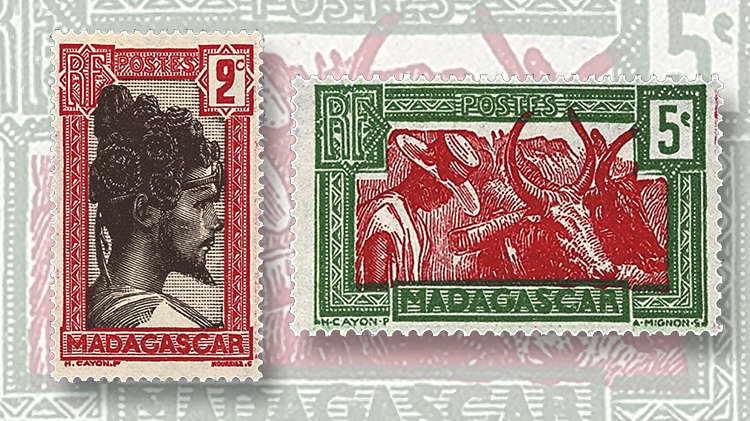US Stamps
Exotic propaganda for French colonies, an update on the U.S. graded stamp market, and adversity usages: Inside Linn’s Stamp News

By Donna Houseman
How was your week? Ours, of course, was filled with stamps and all things philatelic. And we wouldn’t have it any other way. The Aug. 21 issue of Linn’s Stamp News just landed on the presses and goes in the mail to subscribers Monday, Aug. 7. If you’re a digital subscriber, you get early access Saturday, Aug. 5. Here we tantalize you with a few previews of exclusive content.
Are you familiar with Madagascar’s 1930-44 series?
With Madagascar’s exotic and artistic regional-type series, new stamp collectors can begin cultivating a field of philatelic opportunities for a very modest cash outlay. Classic Stamps of the World columnist Kathleen Wunderly explores 17 definitive stamps using four different designs depicting ethnic groups of the colony of Madagascar.
Linn’s U.S. Graded Stamp Report
Each quarter, Linn’s editors carefully review how the philatelic marketplace has affected a chosen group of postage and back-of-the-book stamps from the 19th, 20th, and 21st centuries. This quarterly feature tracks the market activity for selected stamps in eight grades.
Exploring adversity usages of 3¢ Nesbitt envelopes
Early U.S. stamped envelopes were no longer valid for postage when the Confederate postal system started June 1, 1861. Classic U.S. Postal History columnist Labron Harris discusses four covers that show how the Confederacy overcame this adverse problem.
Want to subscribe?
Get access to all of these articles, and so much more, with a Linn’s Stamp News print or digital edition subscription!
MORE RELATED ARTICLES
Headlines
-
US Stamps
Oct 7, 2024, 3 PMMcMurtrie dismissed as APS education director following Sept. 21 arrest
-
US Stamps
Oct 7, 2024, 12 PMVasiliauskas named president of Mystic Stamp Co.
-
US Stamps
Oct 6, 2024, 5 PMApgar souvenir card available
-
US Stamps
Oct 6, 2024, 4 PMFirst Continental Congress and U.N. stamps receive Scott catalog numbers








